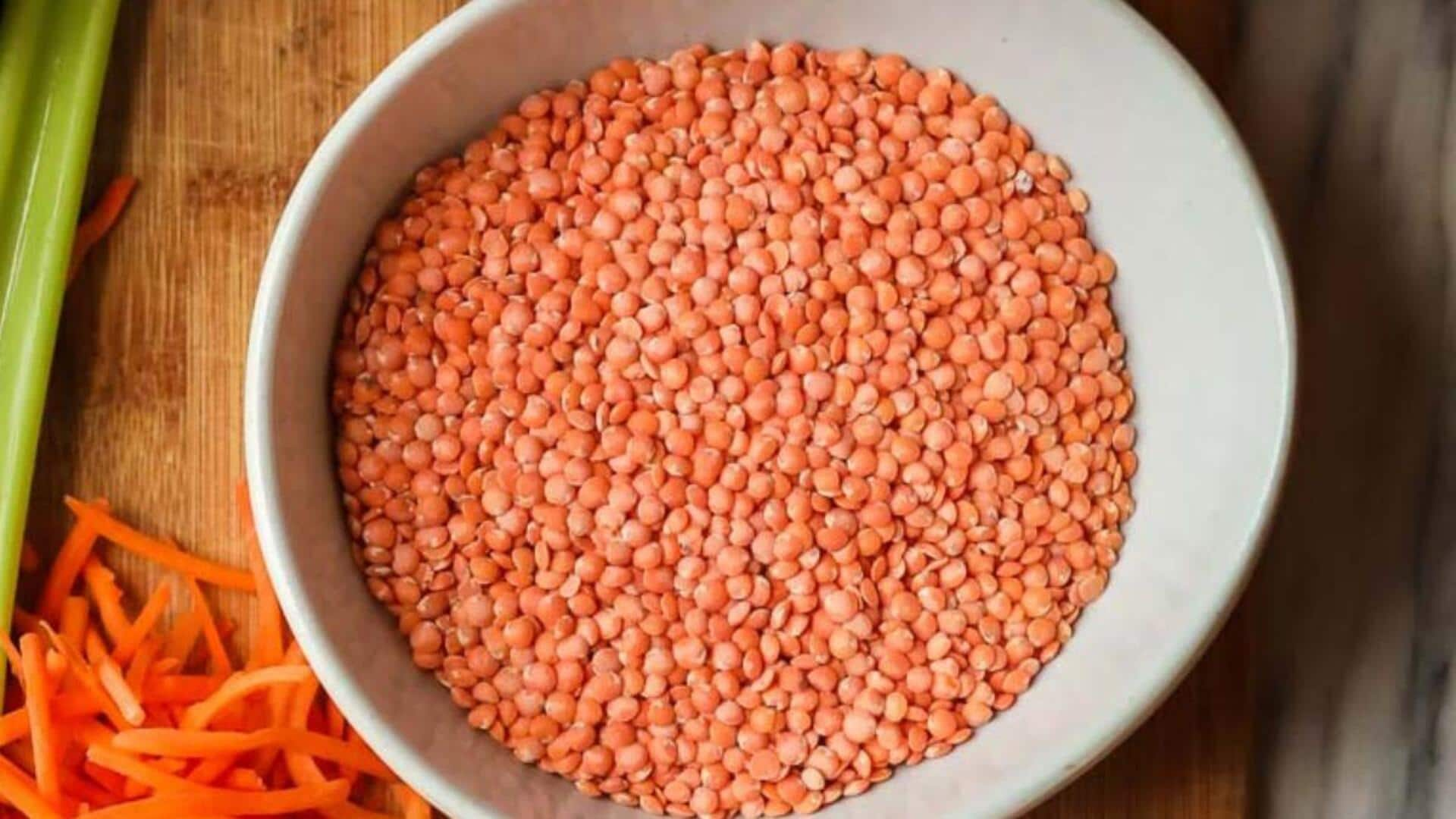
5 must-have lentils for every kitchen
What's the story
Lentils are a vegetarian's best friend, being a rich source of protein and fiber. They come in various types, each having its own flavor and texture. These can elevate the most diverse of dishes, be it soups or salads. Lentils give you versatility and nutrition. Today, we look at five must-have lentils in every vegetarian kitchen. We tell you what to do with them.
#1
Versatile red lentils
Red lentils are fast-cooking legumes that break down easily. This makes them perfect for soups and stews. Their mild flavor also allows them to blend seamlessly into dishes without overpowering them. These lentils are also perfect for making creamy dals or thickening sauces due to their soft texture when cooked.
#2
Nutty green lentils
Green lentils have a firm texture and nutty taste, making them ideal for salads and side dishes. Unlike red lentils, they hold their shape quite well during cooking. This particularity makes them a great option for recipes where you want the lentil to stay separate rather than get mixed into the dish.
#3
Earthy brown lentils
One of the most common varieties found in grocery stores, brown lentils has an earthy flavor that goes well with hearty dishes such as casseroles or veggie burgers. Brown lentils cook fairly quickly than other types but still hold their shape, making them perfect for adding texture and substance to meals.
#4
Delicate yellow lentils
Yellow lentils provide a delicate flavor with a hint of sweetness. They also cook quicker than most other varieties, making them an ideal choice for quick meals like curries or purees. Their light color adds an aesthetic touch when used in colorful dishes with a medley of vegetables.
Tip 5
Unique black beluga lentils
Black beluga lentils look similar to caviar, thanks to their petite size and glossy texture. They have such a robust flavor profile that they can be paired with bold spices or dressings in salads or pilafs. These tiny legumes hold their shape after cooking, while absorbing flavors beautifully from accompanying ingredients.